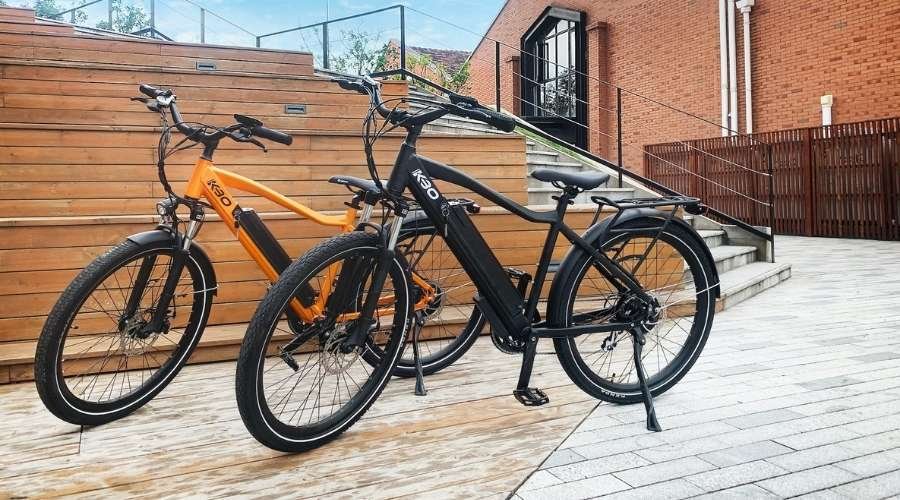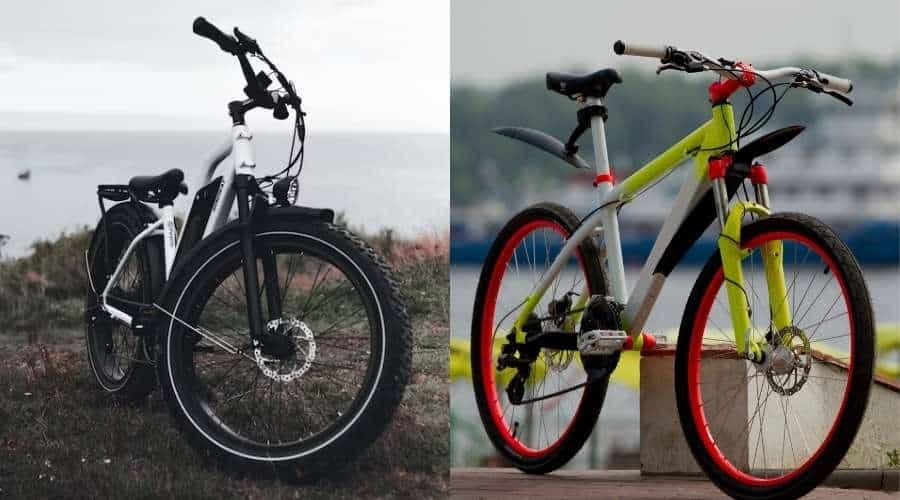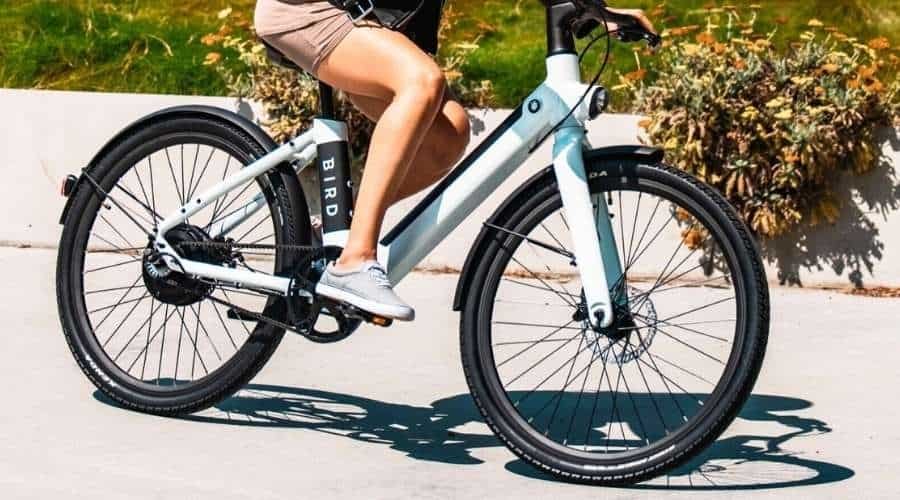Considering the purchase of an e-bike? You’re in good company. E-bike sales have skyrocketed, with a staggering 145% surge from 2019 to 2020 in the United States, as reported by market research firm NPD Group. E-bikes are often hailed as eco-friendly and budget-friendly transportation options, but let’s dive deeper to uncover the true value of this investment.
Before you commit, it’s crucial to grasp the hidden costs associated with e-bike ownership. While e-bikes might appear cost-effective initially, there are unobvious expenses to weigh. Maintenance bills can accumulate, battery replacements can dent your wallet, and in some places, you may need specialized insurance or face registration and licensing fees. This article will illuminate these concealed costs, helping you make an educated decision on whether e-bikes align with your needs and budget.
The Real Costs of E-Bikes

E-bikes are becoming increasingly popular due to their convenience and eco-friendliness. However, owning an e-bike comes with its own set of costs that you should be aware of. In this section, we’ll break down the real costs of owning an e-bike.
Upfront Cost
The first cost you’ll encounter when purchasing an e-bike is the upfront cost. E-bikes are generally more expensive than traditional bikes due to the electric components. According to Consumer Reports, the vast majority of new e-bikes sold today are between $2000 and $3000, but they can range in price from $349 to $80,000. The cost depends on the type of e-bike you want, the quality of the components, and the brand.
Maintenance Cost
Another cost to consider is the maintenance cost. E-bikes have more parts than traditional bikes, which means more parts that can break and need to be replaced. The cost of replacing parts can add up quickly, especially if you neglect your e-bike. According to Electric Mountain Bike Network, numerous e-bike enthusiasts often overlook the true ownership costs associated with their e-bikes and the annual expenses they entail.
Battery Replacement Cost
The battery is one of the most important components of an e-bike, as it powers the electric motor. Over time, the battery will lose its ability to hold a charge and will need to be replaced. The cost of replacing a battery can be expensive, ranging from a few hundred dollars to over a thousand dollars. The lifespan of a battery depends on how often you use your e-bike and how well you take care of it.
Insurance Cost
Finally, you may want to consider the cost of insurance for your e-bike. E-bikes can be expensive, which makes them a target for theft. Insurance can protect your investment and give you peace of mind. The cost of insurance will depend on the value of your e-bike and the coverage you choose.
In conclusion, owning an e-bike can come with its own set of costs, including the upfront cost, maintenance cost, battery replacement cost, and insurance cost. It’s important to factor in these costs when deciding whether an e-bike is right for you.
E-Bike Vs. Traditional Transportation

There are several options available to you when it comes to transportation, including cars, public transit, cycling, and riding an e-bike. Each option has its own set of advantages and disadvantages, and it’s up to you to decide which one is right for you.
E-bikes can be a great option for those who want to save money on transportation while still enjoying the benefits of exercise and the outdoors.
Cars
Cars are a popular mode of transportation because of their convenience and speed. However, they can also be expensive to own and maintain. In addition to the cost of the car itself, you also have to factor in the cost of gas, insurance, and maintenance. Not to mention, cars are a major source of pollution and can contribute to traffic congestion.
Public Transit
Public transit is a great option for those who don’t want to deal with the hassle of driving and parking. It’s also more environmentally friendly than driving a car. However, it can be time-consuming and inconvenient, especially if you live in an area with limited public transportation options.
Cycling
Cycling is a great way to get exercise and enjoy the outdoors while getting from point A to point B. It’s also environmentally friendly and can be a lot of fun. However, it’s not always practical, especially if you have a long commute or live in an area with a lot of hills.
E-Bikes
E-bikes are becoming an increasingly popular option for transportation. They offer many of the same benefits as traditional bikes, such as exercise and environmental friendliness, but with the added convenience of a motor. E-bikes are also less expensive to own and maintain than cars, and they can be a lot of fun to ride. However, they do come with their own set of costs, such as the initial cost of the bike and the cost of replacing the battery when it runs out.
Overall, each mode of transportation has its own set of advantages and disadvantages, and it’s up to you to decide which one is right for you. E-bikes can be a great option for those who want to save money on transportation while still enjoying the benefits of exercise and the outdoors.
Understanding E-Bike Ownership

If you’re new to the world of e-bikes, it’s important to understand what you’re getting into. E-bikes are an excellent way to get around, but they do come with some unique costs that you should be aware of. In this section, we’ll cover the basics of e-bike ownership so that you can make an informed decision.
The Basics of E-Bike Ownership
When you buy an e-bike, you’re not just getting a new mode of transportation. You’re also taking on some new responsibilities. Here are some of the things you’ll need to consider:
- Maintenance: E-bikes require regular maintenance just like regular bikes. However, because they have electric components, they may require additional maintenance. For example, you’ll need to keep the battery charged and make sure that the electrical connections are clean and tight.
- Cost: E-bikes can be more expensive than regular bikes. However, they can also save you money in the long run by reducing your reliance on cars and public transportation. Keep in mind that there may be additional costs associated with e-bike ownership, such as insurance and registration fees.
- Experience: Riding an e-bike is different from riding a regular bike. E-bikes are heavier and faster, which can take some getting used to. You’ll need to practice riding your e-bike before you take it out on the road.
The Benefits of E-Bike Ownership
Despite the additional costs and responsibilities, e-bikes offer many benefits. Here are a few reasons why you might want to consider buying an e-bike:
- Convenience: E-bikes allow you to get around quickly and easily. You can avoid traffic and parking hassles, and you can travel longer distances without getting tired.
- Environmentally Friendly: E-bikes are a more environmentally friendly mode of transportation than cars or public transportation. They produce fewer emissions and require less energy to operate.
- Health Benefits: E-bikes still require physical effort, but they can make cycling more accessible to people who might not be able to ride a regular bike. They can also help you get more exercise and improve your overall health.
Overall, e-bike ownership can be a rewarding experience. Just make sure that you understand the costs and responsibilities before you make a purchase.
E-Bikes in Different Cities

E-bikes are becoming increasingly popular in cities across the United States. Here are some examples of how different cities are incorporating e-bikes into their transportation systems:
New York City
New York City has seen a surge in e-bike usage, but it hasn’t always been smooth sailing. Until recently, e-bikes were illegal in the city, which led to many riders receiving fines. However, in 2020, the city legalized e-bikes and e-scooters, allowing riders to use them on the city’s streets. E-bikes are now available for rent through Citi Bike, the city’s bike-sharing program.
Minneapolis
Minneapolis has been working to make its streets more bike-friendly, and e-bikes are a big part of that effort. The city’s bike-sharing program, Nice Ride, offers both traditional and e-bikes for rent. E-bikes are especially popular among commuters, as they allow riders to cover more ground with less effort.
Chicago
Chicago is another city that has embraced e-bikes. The city’s bike-sharing program, Divvy, added 3,500 e-bikes in 2020 and plans to have 10,000 e-bikes by 2022. The goal is to make e-bikes accessible to 100% of the city’s residents.
Washington, D.C.
Washington, D.C. has a robust bike-sharing program, Capital Bikeshare, which offers both traditional and e-bikes. The city has also been working to improve its bike infrastructure, with new bike lanes and protected bike paths.
Philadelphia
Philadelphia’s bike-sharing program, Indego, offers both traditional and e-bikes for rent. E-bikes have been especially popular among commuters, who appreciate the extra boost they provide on the city’s hilly terrain.
San Francisco
San Francisco has a large and growing e-bike market. The city’s bike-sharing program, Bay Wheels, offers both traditional and e-bikes for rent. E-bikes have been especially popular among tourists, who use them to explore the city’s many hills and landmarks.
Overall, e-bikes are becoming an increasingly common sight on city streets across the United States. As cities work to make their streets more bike-friendly, e-bikes are likely to become an even more important part of the transportation mix.
Health and Environmental Impact

Electric bikes have become increasingly popular in recent years as a form of sustainable transportation. But what are the health and environmental impacts of owning an e-bike? Let’s take a closer look.
Health Impact
One of the main benefits of e-bikes is that they can help you stay active and improve your overall health. While riding an e-bike may not provide as much physical activity as riding a traditional bike, it can still be a great way to get outside and enjoy the fresh air.
E-bikes can be especially beneficial for individuals with mobility issues or those who are recovering from an injury.
Additionally, e-bikes can be especially beneficial for individuals with mobility issues or those who are recovering from an injury. The electric assist can make it easier to ride for longer periods of time without causing excessive strain on your joints.
Environmental Impact
E-bikes are often touted as a more environmentally-friendly alternative to traditional vehicles. They produce zero emissions and require less energy to operate than cars or motorcycles.
However, it’s important to note that e-bikes still have some environmental impact. The production of e-bikes requires the use of materials and energy, which can contribute to carbon emissions. Additionally, the batteries used in e-bikes need to be disposed of properly to avoid environmental harm.
Overall, e-bikes can be a great choice for individuals looking for a more sustainable mode of transportation. While they do have some environmental impact, it is significantly less than traditional vehicles. And, as a bonus, they can also provide health benefits for riders.
The Role of E-Bikes in the Micromobility Movement

E-bikes are playing a significant role in the micromobility movement, which aims to provide affordable and sustainable transportation options in urban areas. Micromobility refers to the use of lightweight and low-speed vehicles, such as bicycles, e-bikes, and e-scooters, for short trips around the city. E-bikes, in particular, have gained popularity due to their ability to make cycling more accessible and enjoyable for a wider range of people.
Bike-sharing programs, such as Capital Bikeshare, Divvy, Citi Bike, and BCycle, have been instrumental in promoting micromobility and making e-bikes more accessible to the public. These programs allow users to rent bikes for short periods, typically for a small fee. The North American Bikeshare Association (NABSA) is a non-profit organization that promotes bike-sharing as a sustainable and equitable mode of transportation.
E-bikes are also being used by fleets to provide delivery services and transportation for employees. Companies such as Uber, Lyft, and Amazon are investing in e-bike fleets to reduce delivery times and transportation costs. E-bikes are also being used by businesses to provide employees with an eco-friendly and cost-effective transportation option.
In addition to their environmental benefits, e-bikes offer several advantages over traditional bicycles. E-bikes make it easier to tackle hills and headwinds, which can be a significant barrier for many people when cycling. They also allow riders to travel longer distances without getting tired, making them a viable option for commuting and leisure rides.
Overall, e-bikes are playing an essential role in the micromobility movement by providing a sustainable and accessible transportation option for urban areas. With the increasing popularity of e-bikes, it is likely that we will see more bike-sharing programs and e-bike fleets in the future.
E-Bike Brands and Their Components

When it comes to e-bikes, there are many brands to choose from, each with their own unique components and features. Some of the most popular e-bike brands include Rad Power Bikes, Juiced Bikes, and Trek.
When you’re shopping for an e-bike, it’s important to pay attention to the components that make up the bike. The battery system, motor, drive train, and brakes are all crucial components that can greatly impact the performance and overall cost of the bike.
When you’re shopping for an e-bike, it’s important to pay attention to the components that make up the bike.
Most e-bike manufacturers and assemblers source their components from a few dominant manufacturers. For example, many components used in well-known e-bike brands like Riese & Muller, Tern, and Gazelle are manufactured by others. This means that the quality and reliability of these components can vary greatly depending on the manufacturer.
Rad Power Bikes is a popular e-bike brand that offers a range of affordable and reliable e-bikes. Their bikes feature high-quality components, including Bafang motors and Samsung batteries. Juiced Bikes is another popular brand that offers a range of powerful and durable e-bikes. Their bikes feature components from top manufacturers like Shimano and Tektro.
When it comes to electric mopeds, Juiced Bikes remains a popular brand that offers a range of stylish and powerful mopeds. Their mopeds feature high-quality components, including 52V batteries and hydraulic brakes.
Overall, when shopping for an e-bike, it’s important to do your research and pay attention to the components that make up the bike. Look for brands that use high-quality components from reputable manufacturers to ensure that you’re getting a reliable and long-lasting e-bike.
E-Bikes During the Pandemic

During the pandemic, e-bike ownership and ridership increased significantly. With public transit taking a hit and social distancing measures in place, many people turned to e-bikes as a convenient and safe alternative to get around.
According to NBC News, as subway ridership declined by 90% in New York City, cities began rolling out fleets of electric motor-assisted bicycles. In the US alone, e-bike sales rose 116% from $8.3m in February 2019 to $18m a year later, just before the impact of Covid.
The pandemic drove a 240% surge in e-bike sales from 2020 to 2021, according to The Atlantic. The reasons for this surge are hard to pin down, but it is easy to surmise that typical bikes sold out everywhere, and solo riding outdoors seemed less risky than other forms of exercise.
However, with this surge in e-bike ownership came some hidden costs. As FT reports, the global supply chain crisis has made it difficult to purchase e-bikes and their components. For instance, Pedego’s priciest product, the $5,495 Elevate, will be out of stock throughout all of 2022 since the company cannot get the necessary parts.
Despite high prices and confusing rules, e-bike sales continue to boom, even during the pandemic. As people continue to prioritize social distancing and avoiding crowded public transportation, e-bikes offer a convenient and safe way to get around.
Incentives and Tax Credits for E-Bikes

If you’re considering purchasing an e-bike, you may be wondering if there are any incentives or tax credits available to help offset the cost. The good news is that there are several programs in place that can save you money on your e-bike purchase.
Federal Tax Credit
One of the most significant incentives available is the federal tax credit. Currently, there is no federal tax credit for e-bikes, but there have been several proposals to change that. The most recent proposal is the Electric Bicycle Incentive Kickstart for the Environment (E-BIKE) Act, which would offer a refundable tax credit amounting to 30% of the e-bike’s price, capped at $1,500. New e-bikes that cost less than $8,000 would be eligible for the refund. However, this bill has not yet been passed.
State and Local Incentives
In addition to federal incentives, some states and local governments offer their own incentives for e-bike purchases. For example, the state of California offers a rebate program that can save you up to $1,000 on the purchase of an e-bike. Other states, such as Colorado and New York, have similar programs in place.
Employer Incentives
If you use your e-bike for commuting to work, your employer may offer incentives as well. Some employers offer reimbursement for bike-related expenses, including the purchase of an e-bike. Additionally, the IRS allows employers to offer tax-free reimbursements of up to $270 per month for qualified bicycle commuting expenses, which includes e-bike purchases.
Manufacturer Incentives
Finally, some e-bike manufacturers offer their own incentives and rebates. These can vary widely depending on the manufacturer and the model of the e-bike. It’s worth doing some research to see if any manufacturers are offering discounts or special deals on e-bikes.
Overall, while there is no federal tax credit currently available for e-bikes, there are still several incentives and programs in place that can help offset the cost of your purchase. Whether you’re looking for state or local incentives, employer incentives, or manufacturer rebates, there are plenty of options to explore.
The Future of E-Bikes
E-bikes have been growing in popularity over the years, and their future looks bright. With advancements in technology, e-bikes are becoming more accessible, longer-lasting, and more affordable. As a result, sales of e-bikes are projected to jump significantly in the coming years.
One of the biggest advantages of e-bikes is their accessibility. E-bikes allow you to travel longer distances without getting tired, making them an ideal mode of transportation for commuters and those who want to explore their city or town. As battery technology continues to improve, e-bikes will be able to travel even farther on a single charge, making them even more convenient.
Another benefit of e-bikes is their cost-effectiveness. While the upfront cost of an e-bike may be higher than a traditional bike, the savings in fuel and maintenance costs can quickly add up. Additionally, e-bikes are often more durable and require less maintenance than traditional bikes, making them a wise long-term investment.
Looking to the future, it’s clear that e-bikes will continue to grow in popularity. As more people become aware of the benefits of e-bikes, sales are expected to jump significantly. This growth will likely lead to more innovation in the e-bike industry, with new features and technologies being developed to make e-bikes even more user-friendly and convenient.
In conclusion, the future of e-bikes looks bright. With their accessibility, cost-effectiveness, and growing popularity, e-bikes are poised to become a staple mode of transportation for many people in the coming years.

